
San Pedro: The Vibrant Heartbeat of Cusco
Discover the lively San Pedro neighborhood in Cusco, Peru, where bustling markets, historic architecture, and vibrant street life create an unforgettable experience.
San Pedro is a dynamic and colorful neighborhood in Cusco, Peru, renowned for its bustling markets, rich cultural heritage, and vibrant street life. At the center of it all is the San Pedro Market, a must-visit attraction where tourists can immerse themselves in the local way of life. Here, you can find everything from fresh produce and traditional Andean crafts to exotic fruits and local delicacies. The market is a sensory overload, offering an authentic experience of Cusco's daily rhythm. Beyond the market, San Pedro is home to stunning colonial architecture and charming narrow streets that invite you to explore. The neighborhood's historic churches, such as the San Pedro Church, provide a tranquil escape from the lively streets. The cobblestone pathways lead you through a tapestry of history, where each building tells a story of Cusco's rich past. San Pedro's proximity to the main square, Plaza de Armas, makes it an ideal base for exploring the rest of Cusco. Whether you're looking to delve into Incan history at the nearby museums or enjoy a cup of coca tea at one of the quaint cafes, San Pedro offers a perfect blend of tradition and modernity. The neighborhood's friendly locals add to its charm, always ready to share a smile or a story, making your visit truly unforgettable.
Local tips in San Pedro
- Visit the San Pedro Market early in the morning to avoid crowds and get the freshest produce.
- Carry small denominations of Peruvian Soles for easier transactions at local stalls.
- Explore the narrow streets around the market for hidden gems like local eateries and artisan shops.
- Take time to visit the San Pedro Church for a moment of tranquility amidst the hustle and bustle.
- Stay hydrated and take it slow; Cusco's high altitude can be challenging for first-time visitors.
San Pedro: The Vibrant Heartbeat of Cusco
San Pedro is a dynamic and colorful neighborhood in Cusco, Peru, renowned for its bustling markets, rich cultural heritage, and vibrant street life. At the center of it all is the San Pedro Market, a must-visit attraction where tourists can immerse themselves in the local way of life. Here, you can find everything from fresh produce and traditional Andean crafts to exotic fruits and local delicacies. The market is a sensory overload, offering an authentic experience of Cusco's daily rhythm. Beyond the market, San Pedro is home to stunning colonial architecture and charming narrow streets that invite you to explore. The neighborhood's historic churches, such as the San Pedro Church, provide a tranquil escape from the lively streets. The cobblestone pathways lead you through a tapestry of history, where each building tells a story of Cusco's rich past. San Pedro's proximity to the main square, Plaza de Armas, makes it an ideal base for exploring the rest of Cusco. Whether you're looking to delve into Incan history at the nearby museums or enjoy a cup of coca tea at one of the quaint cafes, San Pedro offers a perfect blend of tradition and modernity. The neighborhood's friendly locals add to its charm, always ready to share a smile or a story, making your visit truly unforgettable.
Iconic landmarks you can’t miss
Plaza Mayor de Cusco
Experience the vibrant heart of Cusco at Plaza Mayor, where history, culture, and culinary delights converge in a picturesque setting.
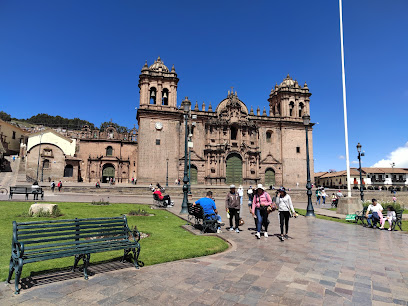
Mercado Central de San Pedro
Explore the vibrant Mercado Central de San Pedro in Cusco for an authentic taste of Peruvian culture, local flavors, and unique handicrafts.
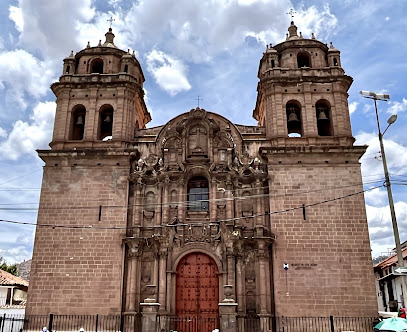
Saqsaywaman
Discover the ancient Inca fortress of Saqsaywaman in Cusco, Peru, and witness the grandeur of this archaeological marvel with breathtaking views.
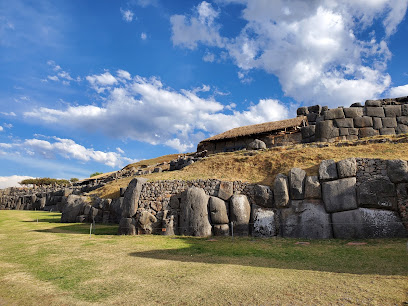
Qorikancha
Explore Qorikancha, the magnificent Incan Temple of the Sun in Cusco, where history, culture, and stunning architecture come together.
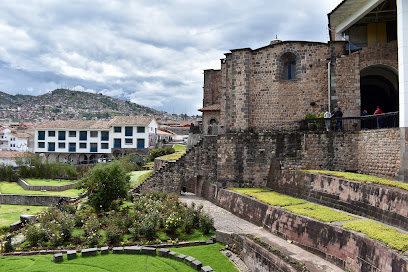
Twelve Angled Stone
Experience the exquisite craftsmanship of the Twelve Angled Stone, a historical landmark in Cusco, reflecting the brilliance of Inca architecture.
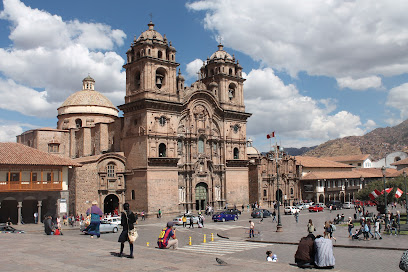
Puka Pukara Archaeological Complex
Explore the ancient fortress of Puka Pukara, a captivating archaeological site near Cusco that offers stunning views and a glimpse into the Inca civilization.

Mirador desde el Cristo Blanco
Experience breathtaking views of Cusco and the Sacred Valley from the iconic Cristo Blanco observation deck, a must-visit for every traveler.
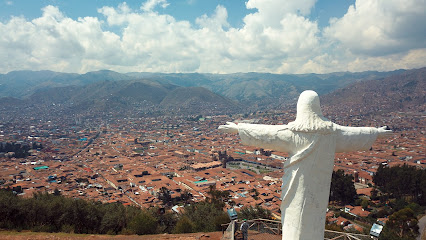
Orellana Pumaqchupan Park
Experience the serene beauty and cultural richness of Orellana Pumaqchupan Park in the heart of Cusco, perfect for relaxation and exploration.

Condor Apuchin
Experience the cultural richness of Condor Apuchin, a stunning monument in Cusco that embodies the spirit of the Andes and its rich heritage.
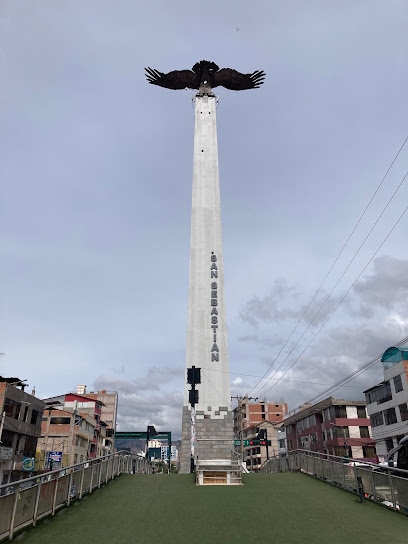
St. Peter's Church
Discover the sacred beauty of St. Peter's Church in Cusco, a remarkable blend of colonial architecture and rich spiritual heritage.
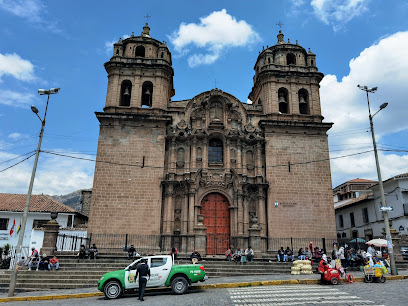
Plazoleta San Pedro
Experience the serene beauty of Plazoleta San Pedro, a charming park in Cusco, where local culture and nature beautifully intertwine.
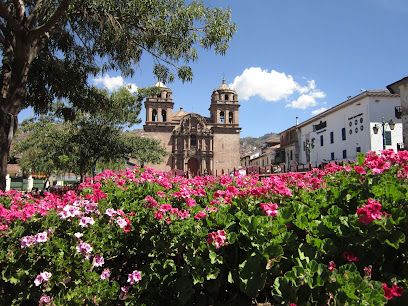
Statue of Christ
Discover the iconic Cristo Blanco in Cusco, a symbol of peace and faith offering stunning panoramic views of the historic city and surrounding landscapes.
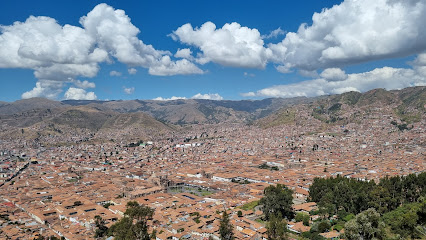
San Pedro Artesanías
Discover the vibrant craftsmanship of Peru at San Pedro Artesanías, a premier destination for unique handicrafts and local artisan culture in Cusco.
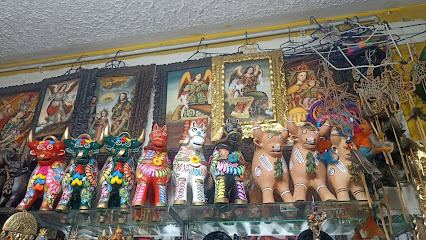
Feria Artesanal Plaza San Pedro
Experience the vibrant culture of Cusco at Feria Artesanal Plaza San Pedro, where artisan crafts and local delicacies come together in a lively market atmosphere.
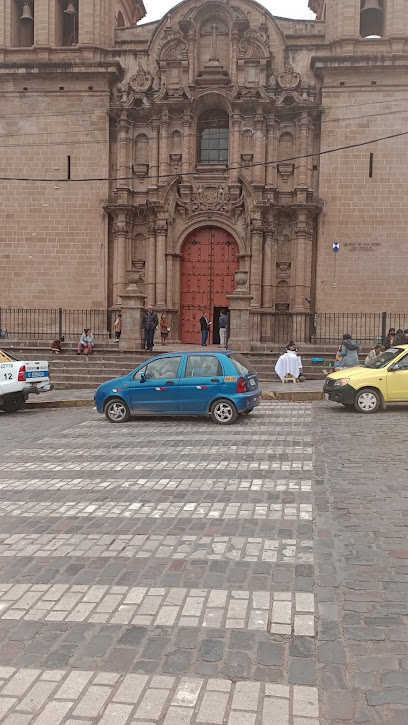
Unmissable attractions to see
Mercado Central de San Pedro
Explore the vibrant Mercado Central de San Pedro, a must-visit market in Cusco offering fresh produce, local cuisine, and unique crafts.
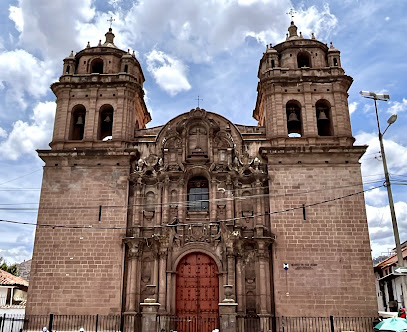
Saqsaywaman
Explore the ancient fortress of Saqsaywaman in Cusco, Peru, a stunning example of Inca architecture and history with breathtaking views.
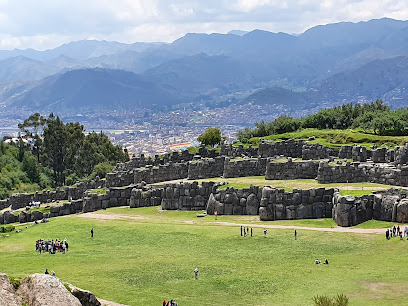
Qorikancha
Explore Qorikancha, the Temple of the Sun, a captivating blend of Incan and colonial history in the heart of Cusco, Peru.
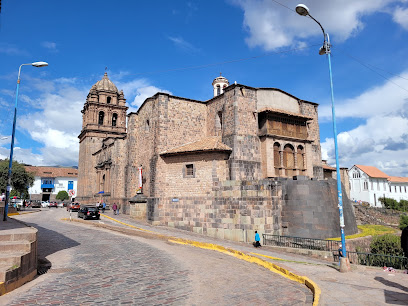
Temple of the Moon
Explore the mystical Temple of the Moon in Cusco, where ancient Incan spirituality and breathtaking landscapes await your discovery.
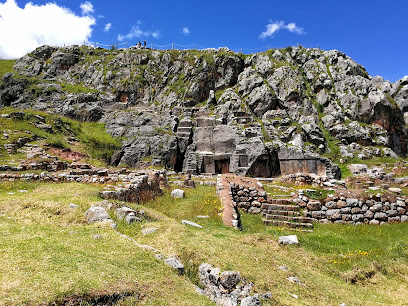
Ruinas de Qhalispuqyo
Explore the ancient ruins of Qhalispuqyo in Peru, a captivating archaeological site steeped in history and surrounded by breathtaking landscapes.
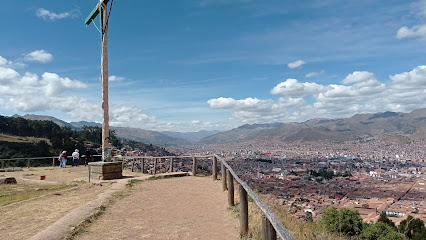
Cusco Planetarium
Discover the wonders of the universe at Cusco Planetarium, where ancient Incan astronomy meets modern astrophysics in a captivating experience.
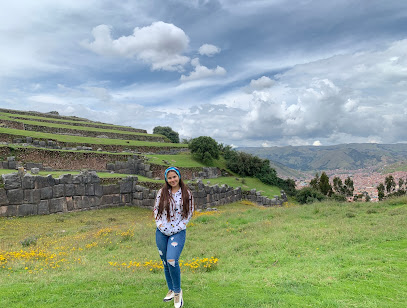
Plazoleta San Pedro
Discover the charm of Plazoleta San Pedro in Cusco, a vibrant park surrounded by local culture and bustling markets, perfect for relaxation and exploration.
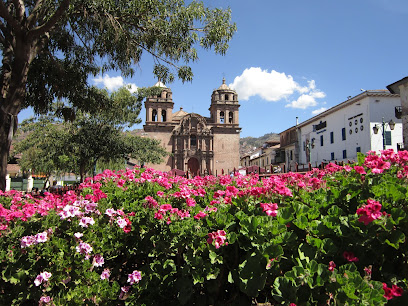
Koricancha Centro Cusco
Explore Koricancha, the Sacred Temple of the Sun in Cusco, where Inca history and colonial architecture blend seamlessly in a breathtaking setting.
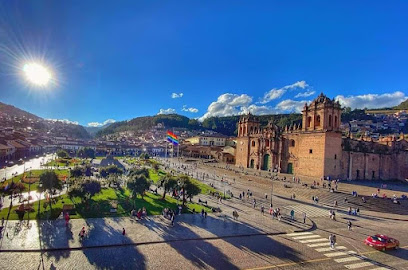
Feria Artesanal Plaza San Pedro
Experience the colorful traditions and craftsmanship of Peru at Feria Artesanal Plaza San Pedro in Cusco, a vibrant market brimming with local culture.
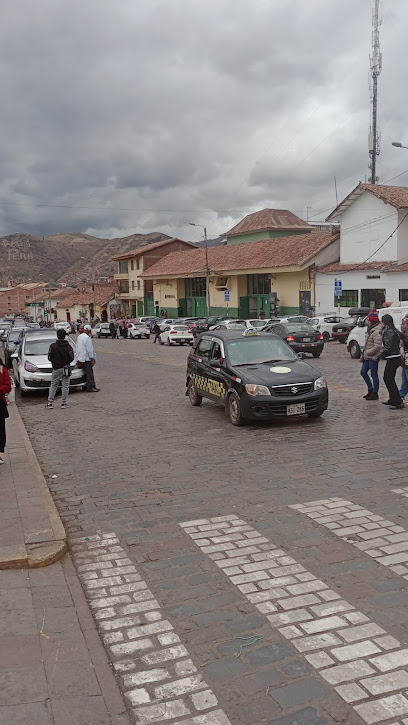
Essential places to dine
LIMBUS RESTOBAR
Experience exquisite dining at Limbus Restobar in Cusco - where flavorful cuisine meets breathtaking views.
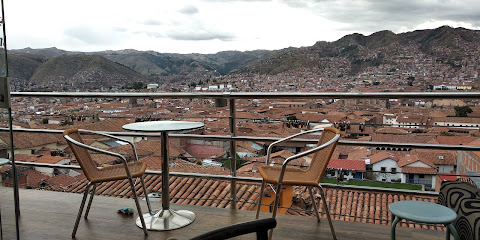
Republica Del Pisco - Cusco
Experience authentic Peruvian flavors at Republica Del Pisco in Cusco - where tradition meets modern gastronomy.
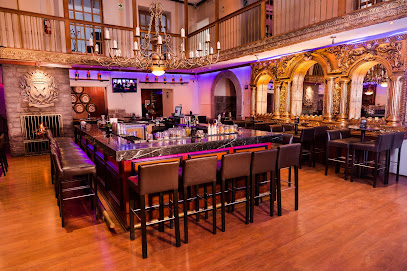
Organika Restaurant
Experience authentic Peruvian cuisine at Organika Restaurant in Cusco's historic center—where fresh ingredients meet traditional flavors.
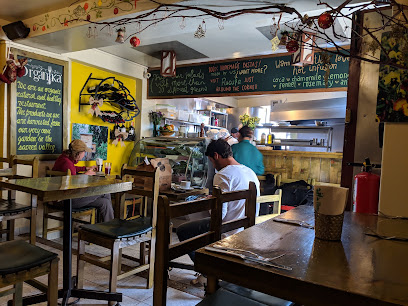
Chicha por Gaston Acurio
Experience exquisite Peruvian cuisine at Chicha por Gaston Acurio in Cusco's historic Plaza Regocijo.
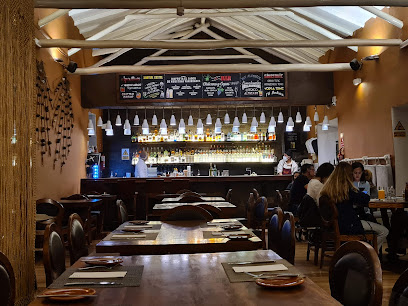
Yaku Restaurant
Discover Yaku Restaurant in Cusco: Where Traditional Peruvian Flavors Meet Modern Culinary Artistry.

Nuna Raymi
Experience authentic Peruvian cuisine at Nuna Raymi in Cusco – where tradition meets taste in every delightful dish.
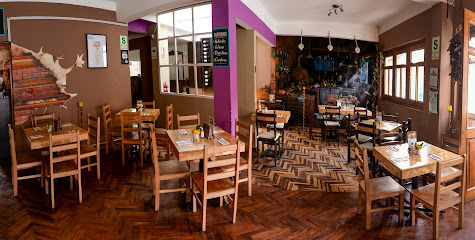
KUSYKAY Peruvian Craft Food
Discover the vibrant flavors of Peru at KUSYKAY Peruvian Craft Food in Cusco—where tradition meets innovation in every dish.
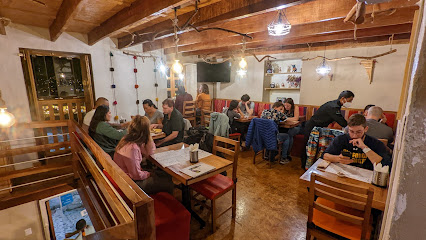
Carpe Diem Cucina Italiana
Experience the best Italian cuisine in Cusco at Carpe Diem Cucina Italiana - where authentic flavors meet local charm.
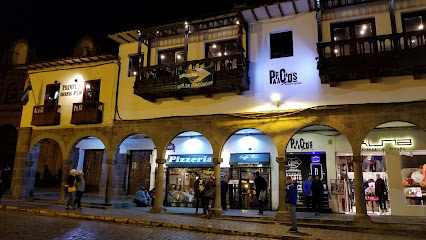
El Mesón de Don Tomas
Experience authentic Peruvian cuisine at El Mesón de Don Tomas in Cusco - where tradition meets flavor in every dish.
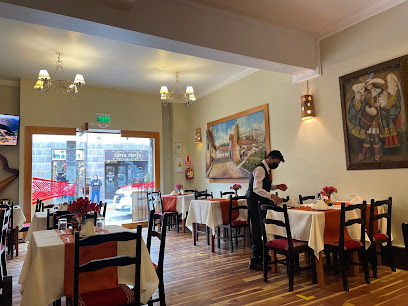
Puerto San Pedro Cevicheria
Discover the vibrant flavors of authentic Peruvian seafood at Puerto San Pedro Cevicheria in Cusco's historic center.
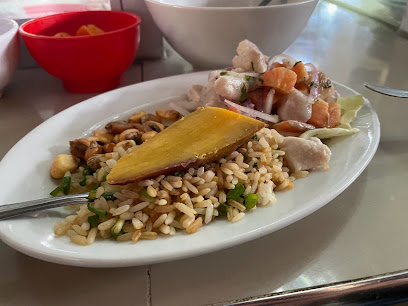
Markets, malls and hidden boutiques
Mercado Central de San Pedro
Discover the heart of Cusco at Mercado Central de San Pedro, where vibrant culture meets authentic Peruvian flavors and artisanal crafts.
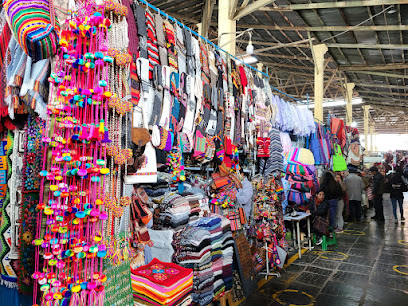
ARTESANIAS LLANCAQMAKI
Explore the rich cultural heritage of Peru at Artesanias Llancaqmaki, where unique crafts and authentic souvenirs await every traveler.

Handicraft Center Cusco
Discover the vibrant artisan culture at Handicraft Center Cusco, a haven for unique crafts and souvenirs reflecting Peru's rich heritage.
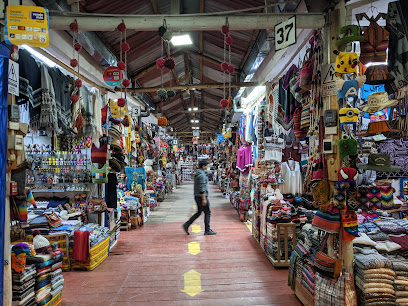
Mercado Artesanal de Productores Inti Paqarek
Discover the essence of Peru at Mercado Artesanal de Productores Inti Paqarek - a vibrant marketplace of crafts, culture, and culinary delights in Cusco.
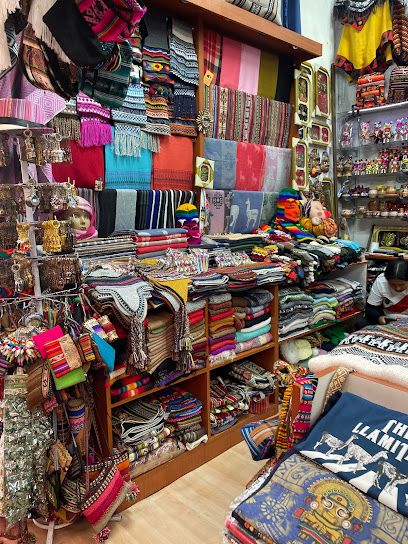
Plazoleta San Pedro
Explore the vibrant atmosphere and cultural charm of Plazoleta San Pedro in the heart of Cusco, a must-visit park for travelers.
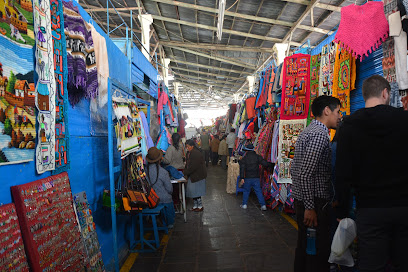
Alpaca Tamon® | Alpaca Factory Outlet
Explore the exquisite world of alpaca fashion at Alpaca Tamon® in Cusco, where tradition meets modern craftsmanship.
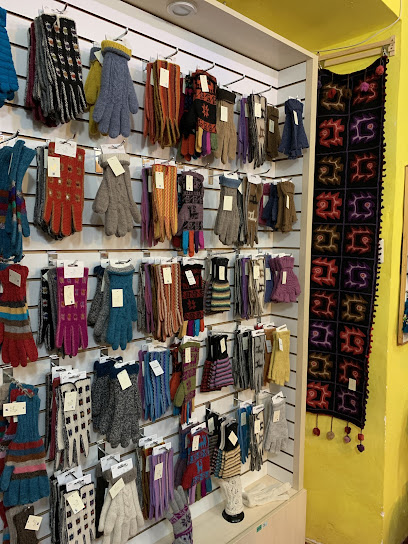
Concept store
Explore a unique concept store in Cusco, offering a blend of contemporary fashion and traditional Peruvian craftsmanship, perfect for every traveler.
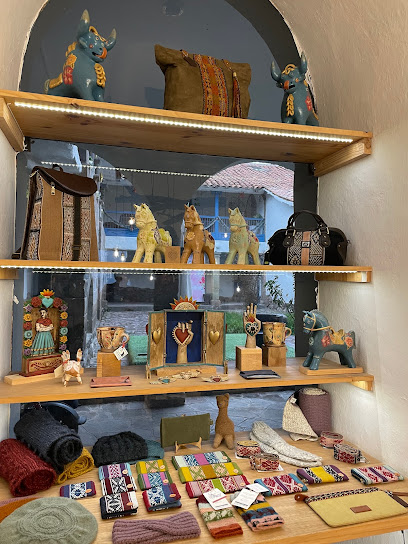
San Pedro Artesanías
Explore the vibrant artisan market of San Pedro Artesanías in Cusco, showcasing authentic Peruvian handicrafts and cultural treasures.
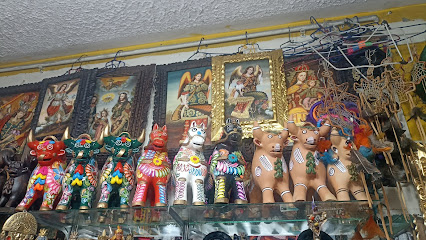
Artesania Angelica CUSCO
Discover artisan crafts and local flavors at Artesania Angelica, a vibrant market in the heart of Cusco, Peru.
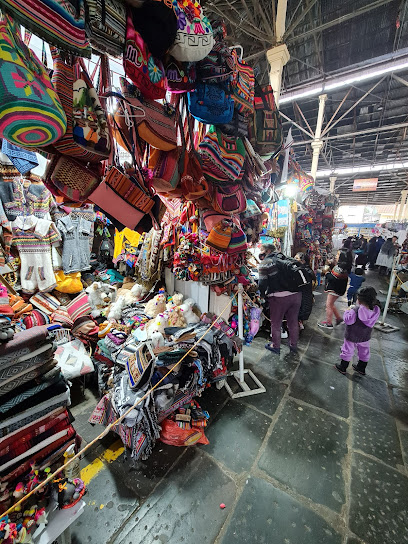
Equipamentos Vehiculares San Pedro
Explore the vibrant shopping scene at Equipamentos Vehiculares San Pedro, where local culture meets modern shopping in the heart of Cusco.

Essential bars & hidden hideouts
LIMBUS RESTOBAR
Experience the flavors of Peru and breathtaking views at Limbus Restobar, the perfect blend of cuisine and scenery in Cusco.

La chupiteria the shot bar
Discover the heartbeat of Cusco's nightlife at La Chupiteria, the ultimate shot bar with an extensive menu and vibrant atmosphere.
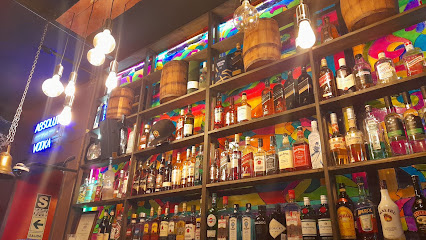
Ukukus Music Club - Bar
Dive into the vibrant nightlife of Cusco at Ukukus Music Club - Bar, where live music and great food come together for an unforgettable experience.
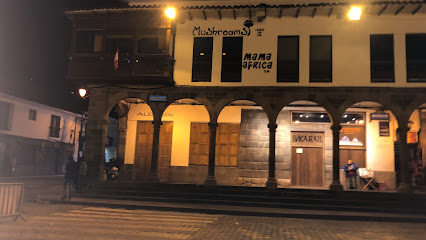
Paddy's Irish Pub
Experience the warmth of Irish hospitality at Paddy's Irish Pub in Cusco, where great food and drinks await in a vibrant atmosphere.
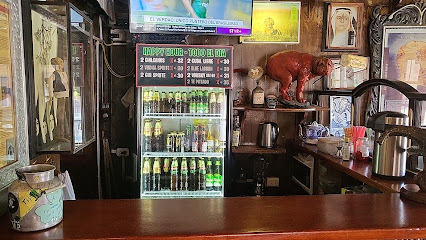
Plaza Mayor Cusco Restobar
Experience the best of Peruvian cuisine at Plaza Mayor Cusco Restobar, where tradition meets modernity in a lively gastropub atmosphere.

Chango Club Cusco
Experience the vibrant nightlife at Chango Club Cusco, where eclectic music and delightful cocktails come together in the heart of the city.
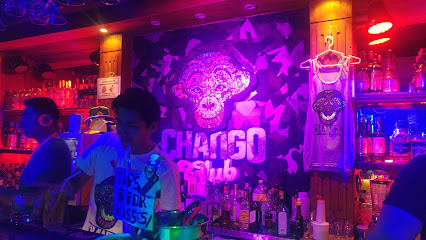
El Duende Resto Lounge
Experience the vibrant flavors of Peru at El Duende Resto Lounge, a must-visit bar and restaurant in Cusco's historic center.
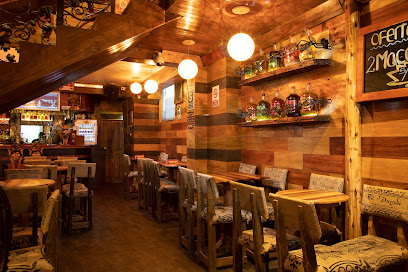
Black Cat Bar Cusco - Craft Cocktails & Spirits
Discover the essence of Cusco's nightlife at Black Cat Bar, where craft cocktails and warm ambiance create unforgettable experiences.
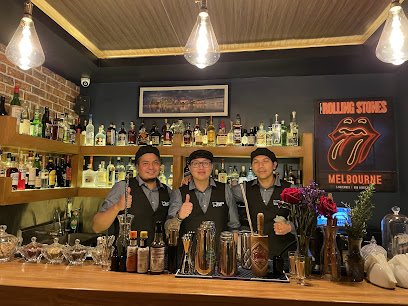
Fada Terraza & Cocktails Cusco
Discover the vibrant nightlife of Cusco at Fada Terraza & Cocktails, where stunning views and exquisite cocktails create unforgettable moments.

Best View Restobar Karaoke
Experience the vibrant nightlife at Best View Restobar Karaoke in Cusco, where delicious food meets unforgettable entertainment and stunning views.
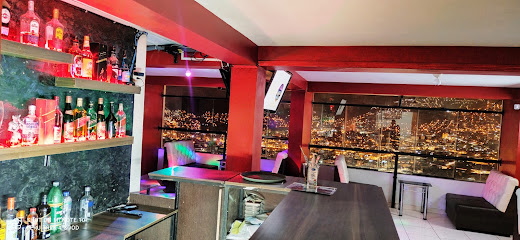
Local Phrases
-
- HelloHola
[OH-lah] - GoodbyeAdiós
[ah-DYOHS] - YesSí
[SEE] - NoNo
[NOH] - Please/You're welcomePor favor/De nada
[pohr fah-VOHR/de NAH-dah] - Thank youGracias
[GRAH-syahs] - Excuse me/SorryPerdón/Lo siento
[PEHR-dohn/loh SYEHN-toh] - How are you?¿Cómo estás?
[KOH-moh ehs-TAHS] - Fine. And you?Bien. ¿Y tú?
[byen. ee too?] - Do you speak English?¿Hablas inglés?
[AH-blahs een-GLEHS?] - I don't understandNo entiendo
[NOH ehn-TYEHN-doh]
- HelloHola
-
- I'd like to see the menu, pleaseMe gustaría ver el menú, por favor
[meh goos-tah-REE-ah vehr ehl MEH-noo, poor fah-VOHR] - I don't eat meatNo como carne
[NOH KOH-moh KAHR-neh] - Cheers!¡Salud!
[sah-LOOD] - I would like to pay, pleaseMe gustaría pagar, por favor
[meh goos-tah-REE-ah pah-GAHR, poor fah-VOHR]
- I'd like to see the menu, pleaseMe gustaría ver el menú, por favor
-
- Help!¡Ayuda!
[ah-YOO-dah] - Go away!¡Vete!
[VEH-teh] - Call the Police!¡Llama a la policía!
[YAH-mah ah lah poh-LEE-see-ah] - Call a doctor!¡Llama a un doctor!
[YAH-mah ah oon dohk-TOHR] - I'm lostEstoy perdido
[ehs-TOY pehr-DEE-doh] - I'm illEstoy enfermo
[ehs-TOY ehn-FEHR-moh]
- Help!¡Ayuda!
-
- I'd like to buy...Me gustaría comprar...
[meh goos-tah-REE-ah kohm-PRAR] - I'm just lookingSolo estoy mirando
[SOH-loh ehs-TOY meer-AHN-doh] - How much is it?¿Cuánto cuesta?
[KWAHN-toh KWEHS-tah] - That's too expensiveEso es demasiado caro
[EH-soh ehs deh-mah-SYA-doh KAH-roh] - Can you lower the price?¿Puede bajar el precio?
[PWEH-deh BAH-hahr ehl PREH-syoh]
- I'd like to buy...Me gustaría comprar...
-
- What time is it?¿Qué hora es?
[keh OR-ah ehs] - It's one o'clockEs la una
[ehs lah OO-nah] - Half past (10)Y media (10)
[ee MEH-dee-ah (DEE-ehz)] - MorningMañana
[mah-NYAH-nah] - AfternoonTarde
[TAHR-deh] - EveningNoche
[NOH-cheh] - YesterdayAyer
[ah-YEHR] - TodayHoy
[oy] - TomorrowMañana
[mah-NYAH-nah] - 1Uno
[OO-noh] - 2Dos
[dohs] - 3Tres
[trehs] - 4Cuatro
[KWAH-troh] - 5Cinco
[SEEN-koh] - 6Seis
[says] - 7Siete
[SYEH-teh] - 8Ocho
[OH-choh] - 9Nueve
[NWEH-veh] - 10Diez
[dyehs]
- What time is it?¿Qué hora es?
-
- Where's a/the...?¿Dónde está el/la...?
[DOHN-deh ehs-TAH ehl/lah] - What's the address?¿Cuál es la dirección?
[KWAHL ehs lah dee-rehk-SYOHN] - Can you show me (on the map)?¿Puedes mostrarme (en el mapa)?
[PWEH-dehs mohs-TRAHR-meh (ehn ehl MAH-pah)] - When's the next (bus)?¿Cuándo es el próximo (autobús)?
[KWAHN-doh ehs ehl PROK-sy-moh (ow-toh-BOOS)] - A ticket (to ....)Un boleto (a ....)
[oon boh-LEH-toh (ah ....)]
- Where's a/the...?¿Dónde está el/la...?
History of San Pedro
-
San Pedro, located near the heart of Cusco, has its roots in the Inca civilization, which thrived in the region before the Spanish conquest. The area was part of the vast network of the Inca Empire, known for its sophisticated agricultural practices and impressive architectural feats. The nearby Temple of the Sun (Qorikancha) served as a spiritual and cultural hub, influencing local communities, including those in San Pedro.
-
With the arrival of Spanish conquistadors in the 16th century, San Pedro transformed significantly. The Spanish established colonial structures, often repurposing Inca buildings for their purposes. The San Pedro Church, constructed in the 17th century, is a prime example of colonial architecture that combines indigenous and Spanish styles. This era marked the imposition of European culture and religion, which left a lasting impact on the local community.
-
By the late 19th century, the San Pedro Market began to take shape, becoming a crucial center for trade and commerce in Cusco. The market became a vibrant hub where local farmers, artisans, and merchants gathered to sell their goods, reflecting the region's rich agricultural heritage. This bustling marketplace continues to thrive today, attracting both locals and tourists seeking authentic Peruvian products and culinary experiences.
-
Throughout the 20th century, San Pedro experienced a cultural revitalization as Cusco became a focal point for tourism, particularly after Machu Picchu was rediscovered. The neighborhood celebrated its indigenous heritage through festivals, traditional music, and dance, fostering a sense of identity among its residents. This resurgence of interest in local culture has made San Pedro a vital part of Cusco's contemporary cultural landscape.
-
In recent years, San Pedro has seen significant developments aimed at enhancing its appeal to tourists while preserving its cultural roots. Renovations of historical sites, improvements to infrastructure, and the promotion of cultural events have contributed to a vibrant atmosphere. The neighborhood serves as a gateway to experiencing the rich tapestry of Cusco's history, making it a must-visit destination for travelers.
San Pedro Essentials
-
San Pedro is easily accessible from other neighborhoods in Cusco. It is located about a 10-minute walk from the historic city center (Plaza de Armas). You can also take a local taxi or a mototaxi, which are common forms of transport in the area and are relatively inexpensive. If you're coming from the airport, a taxi will take around 15-20 minutes depending on traffic.
-
San Pedro is a compact neighborhood that is best explored on foot. However, if you're looking to venture further, local buses and vans (known as combis) run frequently and are a cost-effective option. Bicycles can be rented from nearby shops, and taxis are readily available for longer distances or more convenience.
-
While San Pedro is generally safe for tourists, it is important to remain vigilant, especially in crowded areas like the market. Avoid walking alone at night and be cautious of pickpockets in busy places. Areas near the bus stations can be less safe after dark, so it's best to avoid those late at night.
-
In case of an emergency, you can dial 105 for police assistance or 116 for medical emergencies. It is advisable to have travel insurance that covers emergencies. For minor health issues, local pharmacies are available, and many have English-speaking staff.
-
Fashion: Do dress modestly, especially when visiting local markets or religious sites. Avoid overly casual or revealing clothing. Religion: Do respect local customs, and be prepared to cover your head when entering churches. Public Transport: Do be polite and give up your seat for the elderly. Don't eat or drink on public transport. Greetings: Do greet locals with a handshake, and a smile goes a long way. Eating & Drinking: Do try local street food but ensure that it's from a busy vendor. Don't refuse food or drink if offered, as it may be considered rude.
-
To experience San Pedro like a local, visit the San Pedro Market where you can find fresh produce, traditional textiles, and local delicacies. Engage with vendors and try some street food, like salchipapas or empanadas. Also, explore the nearby neighborhoods to discover hidden gems and local art galleries. Participating in local festivals can also provide a deeper understanding of Cusco's culture and traditions.
Trending Landmarks in San Pedro
-
Plaza Mayor de Cusco
-
Mercado Central de San Pedro
-
Saqsaywaman
-
Qorikancha
-
Twelve Angled Stone
-
Puka Pukara Archaeological Complex
-
Mirador desde el Cristo Blanco
-
Orellana Pumaqchupan Park
-
Condor Apuchin
-
St. Peter's Church
-
Plazoleta San Pedro
-
Statue of Christ
-
San Pedro Artesanías
-
Feria Artesanal Plaza San Pedro
Nearby Cities to San Pedro
-
Things To Do in Machu Picchu
-
Things To Do in Puno
-
Things To Do in Arequipa
-
Things To Do in Copacabana
-
Things To Do in Ayacucho
-
Things To Do in La Paz
-
Things To Do in Tacna
-
Things To Do in Ica
-
Things To Do in Huancayo
-
Things To Do in Arica
-
Things To Do in Cochabamba
-
Things To Do in Lima
-
Things To Do in Iquique
-
Things To Do in Sucre
-
Things To Do in Potosi











